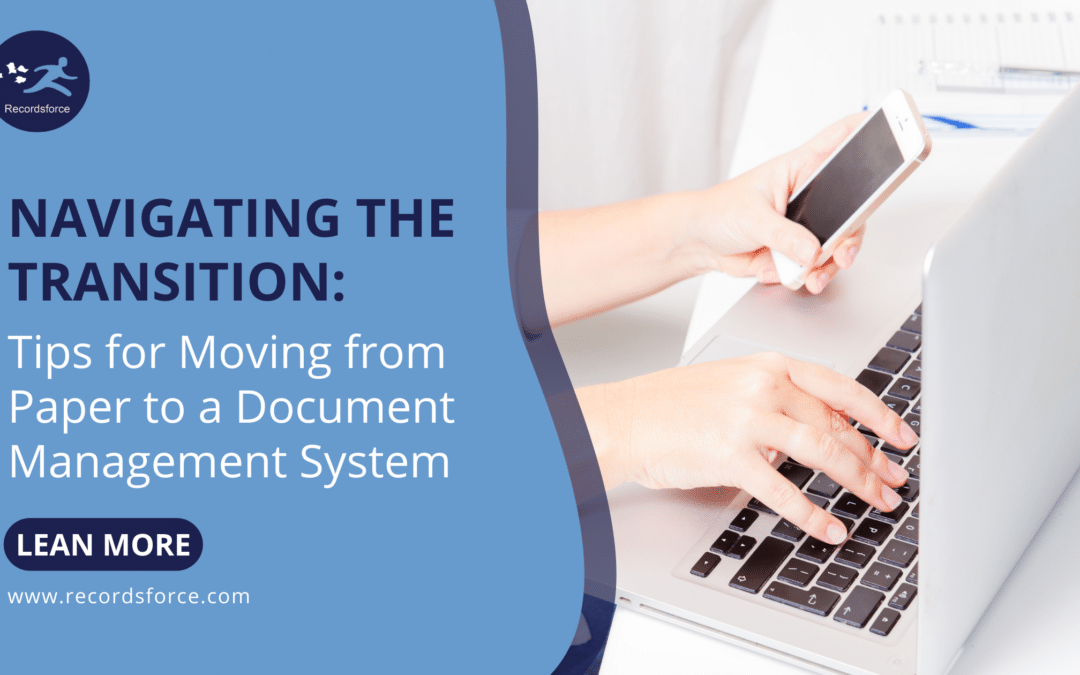The shift from paper-based document management to digital solutions is becoming increasingly essential. The benefits of document management systems are numerous, including improved efficiency, cost savings, enhanced security, and easier collaboration. However, transitioning from paper to digital can be a complex process that requires careful planning and execution. To help businesses navigate this transition effectively, we’ve compiled a comprehensive list of tips and best practices.
- Assess Your Current Document Management Practices: Before making the transition, it’s crucial to assess your current document management practices. Identify the types of documents you handle, how they are stored, and the challenges you face. This assessment will help you understand your requirements and select the right digital solution.
- Choose the Right Digital Tools: There are various document management system tools available. Select a solution that meets your specific needs and budget. Consider factors such as scalability, ease of use, and integration capabilities.
- Plan Your Transition: Develop a detailed plan for transitioning from paper to digital. Consider factors such as document scanning, data migration, employee training, and timeline. Having a clear roadmap will ensure a smooth transition and minimize disruptions to your business operations.
- Digitize Your Documents: Start by scanning your paper documents to create digital copies. Consider outsourcing this task to a professional document scanning service for large volumes of documents. Ensure that the scanned documents are of high quality and properly indexed for easy retrieval.
- Implement Document Management Software: Invest in a reliable document management software (DMS) to organize and manage your digital documents effectively. A DMS can streamline workflows, improve collaboration, and enhance security. Make sure to customize the software to fit your specific needs and train your employees on how to use it effectively.
- Train Your Employees: Provide comprehensive training to your employees on using the new digital tools and document management processes. Ensure they understand the benefits and best practices for digital document management. Encourage them to embrace the change and provide ongoing support as they adjust to the new system.
- Establish Document Security Protocols: Implement strict security protocols to protect your digital documents from unauthorized access and data breaches. Use encryption, access controls, and regular audits to ensure compliance with data protection regulations, all which should be included as part of your document management system. Educate your employees about the importance of data security and their role in maintaining it.
- Integrate with Existing Systems: Ensure that your new document management system integrates seamlessly with your existing software and systems. This will help streamline processes and avoid compatibility issues. Work closely with your IT department to ensure a smooth integration process.
- Monitor and Improve: Continuously monitor the performance of your document management system and make improvements as needed. Solicit feedback from employees to identify areas for enhancement and implement changes accordingly. Regularly review your document management practices to ensure they are meeting your business needs and goals.
- Stay Compliant: Ensure that your digital document management practices comply with relevant laws and regulations, such as GDPR or HIPAA. Regularly review and update your compliance policies to reflect changes in regulations and industry standards. Conduct regular audits to ensure compliance and address any issues promptly.
Moving from paper to a document management system can be a transformative process for your business. By following these tips and best practices, you can navigate the transition smoothly and reap the benefits of improved efficiency, cost savings, and enhanced security.

